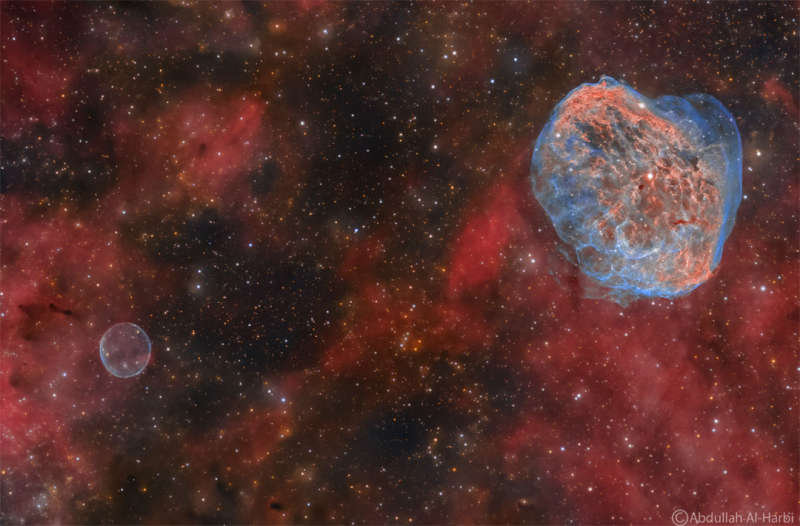
|
Credit & Copyright: Abdullah Al-Harbi
Explanation:
As stars die, they create clouds.
Two stellar death clouds of gas and dust
can be found toward the high-flying constellation of the Swan (Cygnus)
as they drift through
rich star fields in the plane of our
Milky Way Galaxy.
Caught here within the
telescopic
field of view are the
Soap Bubble (lower left) and the
Crescent Nebula (upper right).
Both were formed at the final phase in the life of a star.
Also known as NGC 6888,
the Crescent Nebula was shaped as its bright, central massive
Wolf-Rayet
star, WR 136, shed its outer envelope in
a strong stellar wind.
Burning through fuel at a prodigious rate, WR 136 is near the end of
a
short life
that should finish in a spectacular
supernova explosion.
Discovered in 2013, the Soap Bubble Nebula is likely a
planetary
nebula, the final shroud of a lower mass, long-lived, Sun-like star
destined to become a slowly cooling white dwarf.
Both stellar nebulas are about 5,000
light-years
distant, with the larger Crescent Nebula
spanning
about 25 light-years across.
Within a few million years, both will likely have dispersed.
Your Sky Surprise:
What picture did APOD feature on your birthday? (post 1995)
|
January February March April May June July August September October November December |
| ||||||||||||||||||||||||||||||||||||||||||||||||
NASA Web Site Statements, Warnings, and Disclaimers
NASA Official: Jay Norris. Specific rights apply.
A service of: LHEA at NASA / GSFC
& Michigan Tech. U.
Based on Astronomy Picture
Of the Day
Publications with keywords: Cygnus - NGC 6888
Publications with words: Cygnus - NGC 6888
See also:
